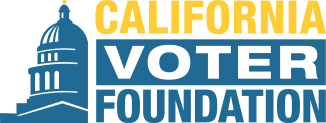Excerpts:
More than 11 days after polls closed around the nation and Donald Trump was declared president-elect of the United States, California is still moving methodically through roughly 800,000 uncounted ballots that are holding up final tallies in several contests.
As of Saturday, Nov. 16, two congressional races — including a local matchup between Republican Michelle Steel and Democrat Derek Tran in the 45th Congressional District, who are separated by just 58 votes — remained too close to call. Those races could play key roles in whether Republicans are able expand their new majority in the House, yet it could be days, or even weeks, until clear winners emerge.
The long delay stems from Californians moving away from in-person voting. The state is one of eight in the country, plus Washington, D.C., that sends vote-by-mail ballots to all registered voters, ensuring a more tedious process to tally election results.
Criticism about the lagging vote tabulation prompted Secretary of State Shirley Weber to take to the social media site X on Friday to urge patience in “the weeks ahead.”
“It takes time to ensure every ballot is counted, every ballot is accounted for and every voter only voted once,” Weber said. “State law gives California election officials 30 days after election date to complete vote count, auditing and certification.”
In Orange and Los Angeles counties, where CD 45 is located, there were still an estimated 71,911 and 79,400 ballots left to process, respectively, as of the last update on Friday. Officials in neighboring San Bernardino and Riverside counties likewise estimated 75,600 and 35,600 votes, respectively, remained to be counted in their areas on Saturday.
- - - - - - - - - -
Vote-by-mail ballots take longer to process than those cast in person because election officials must check for duplicate ballots, verify signatures and sometimes remake ballots that have been been flattened, damaged or marked improperly, according to the California Voter Foundation.
California allows until Dec. 1 to “cure” problem ballots from voters who made a mistake, such as forgetting their signature, signing in the wrong place or not enclosing their ballot in the proper envelope. County election officials also try to cure ballots with signatures that don’t match a voter’s original registration card. As of Saturday, 129,286 ballots in California still needed to undergo the curing process, which involves reaching out to the voter to try to resolve the issue.
Compounding the delay is that under vote-by-mail rules in California, the state accepts postmarked ballots for a week after election night, whereas some states, such as Florida, do not accept them after polls close on Election Day.
Goal is higher turnout
Assemblymember Marc Berman, D-Palo Alto, authored the 2021 law that continued the pandemic-era mandate that every registered voter should receive a vote-by-mail ballot and increased the acceptance period from three days to seven. The goal, he said, is to “make it as easy as possible for every active registered voter in California to vote.”
“I realize that in today’s society everyone expects immediate gratification, but I personally think higher voter turnout should be the primary goal of our election system while also ensuring for security and an accurate count,” Berman said in a statement.
A 2021 study published by the Public Policy Institute of California found that states that mail a ballot to every registered voter see turnout increases on average of 4% or more. For policymakers, reforms such as the vote-by-mail expansion are more about giving voters a choice and aren’t expected to move the needle by more than few percentage points in general, said Mindy Romero, founder and director of the Center for Inclusive Democracy and a co-author on the study.
“You don’t expect a huge sea change from any election reform that is about opening up access,” Romero said. “The fact that it takes so long is a good thing, it’s about ensuring the ballot is matched up with somebody’s signature.”
----
Every vote makes a difference
The foundation launched an initiative this year called the Close Count Transparency Project that highlights how every vote makes a difference in California because so many races are decided by narrow margins.
“I don’t think people would be so bothered by our long vote counts if races could be decided more quickly,” she said. “Thanks to legislative term limits, independent redistricting and the top two primary system, we have more competition in our congressional races and our legislative races.”
In 2022, the tallying went on for so long that congressional orientations began before all of the winners had been decided, Alexander said. That happened again this year, as soon-to-be lawmakers descended on Capitol Hill on Tuesday for orientations. This year, in undecided races, both candidates were invited to attend.
Alexander said some additional tweaks to vote-by-mail could help, such as allowing people to opt out of vote-by-mail if they intend to vote in person, or to turn in mailed ballots, without the signed envelope, at voting centers on Election Day.
But both Romero and Alexander said that if voters want faster results, the main factor is funding.
“If people want to see it happen faster, lawmakers need to step up and provide the funding that is needed by county election departments to accelerate the vote count,” Alexander said. “That would make a big difference.”

